Resources
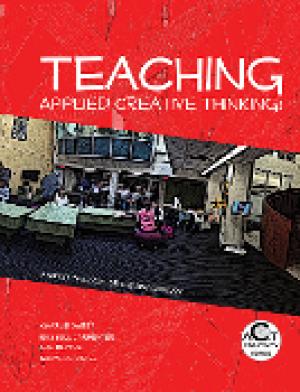
The “new pedagogy” offered here is an integration of educational theory, common-sense pedagogy, and the authors’ own experiences in applying a different way of teaching and learning. The particular focus of the book is on teaching “applied creative thinking” to the teaching and learning process. The 168-page book -- in workbook format -- has twenty-five short chapters, so readers should not expect deep coverage of the varied topics reviewed. Chapters I through XI (some as short as three pages) present core ideas of the pedagogical model. Chapters XII through XX present sketches of nine specific teaching strategies. The authors offer a creative thinking pedagogy applicable across subject matters. They borrow from Holbert and Taylor’s definition of pedagogy as “intentional teaching, that is, the embodiment of principles in practice” which entails a combination of theory and praxis (4). The new pedagogy the authors propose is essentially a reframing of the teacher’s role as “Mentor-from-the-Middle” (borrowed from the work of Erica McWilliam) in a learning context (physical and attitudinal) that will help make the shift from a teacher-centered to a learner-focused pedagogy in order to foster creative thinking as both process and outcome. Of necessity, agency for learning requires a shift in the center of authority from teacher to student in order to facilitate self-directed learning. A “Key Concept” of Chapter VIII, “The Meddler-in-the-Middle is a theory that is difficult to translate into practice” is not encouraging (48). Their response to this challenge is to reframe the Meddler-in-the-Middle approach using the metaphor “Mentoring-from-the-Middle” as a “new paradigm.” The new paradigm replicates established educator roles and reframes the function of the teacher under the metaphor of Mentor-from-the-Middle. In this model the teacher assumes the roles of scholar, mentor, facilitator, coach, model, and critical reflector. These roles in turn, purportedly, combine to help transform the learner into an active creative thinker. Aside from helping to facilitate the shift away from a teacher-centered pedagogy, how this reframing of the teacher’s role translates into students becoming “active creative thinkers” is not explicated satisfactorily. Following the shift in the teaching role, the authors present a structure for the learning experience. They organize the learning experience into six phases: information gathering, crystallizing, creating the project, completing the project, skill-making, and evaluating the learning unit. This scaffolded constructivist approach to structuring the learning experience, coupled with a shift in the teacher’s place in the classroom environment (moving from the front of the classroom to the middle of the classroom, among the learners) represents the book’s new pedagogy. The parts of the book that specifically address the ways creativity is fostered speak to the importance of the setting (environment) for learning (Chapter V), some portions of Chapter VII summarizing insights from neuropsychology, and Chapters XII through XXI which present sketches of nine specific creative teaching strategies (including mainstays such as brainstorming, collaboration, pattern recognition, metaphors, crossword puzzles, and video games). The chapter on instructional technology (Chapter VI) could have been left out as it added little substance to the matter of creative thinking, nor did it advance new ideas about the use or impact of instructional technology on teaching and learning, or particularly, on creativity. This is not a poor book, but it is also not a great one. The authors overpromise on a “new” pedagogy for the twenty-first century, but do offer a sound model that reflects a helpful shift in the role of the teacher, a particular model for organizing the learning experience, and responsible attention to studies in relevant fields that can inform effective educational practice.

In her Teaching Theology & Religion review of Nicola Whitton’s Learning with Digital Games: A Practical Guide to Engaging Students in Higher Education, Rachel Wagner observed that the book “offers general advice for those brave enough to write their own games for educational use, but the book is not, nor does it claim to be, a handbook on how to produce video games” (Teaching Theology & Religion 15, no. 1: 91). Whitton’s newer co-edited collection with Alex Moseley, presumably, is intended to be that handbook, though many of its initial chapters seem to replicate Witton’s original call for more educators to take an interest in game pedagogy and put some investment in games for the secondary and post-secondary classroom. From there, the book offers the fundamentals, from the rudimentary to the quite advanced, but breaks it into such discrete units that a certain degree of disconnect forms between the separately useful entries. Whereas an entire chapter, co-written by Whitton and Dave White, did not need to be dedicated to “Narrative” (such as explaining what conflict or plot is), other sections, like “Mapping Games to Curricula” by Moseley and Rosie Jones, could have been given more page space to explore their complexities. In fact, the collection does offer real-life case studies of games developed for and attempted in the classroom, but their lack of variety in terms of academic disciplines disappoints; [in]visible Belfast and ViolaQuest are marvelous examples of games-based education promoting the literary exploration of a city and the social orientation of students to the wider campus community, respectively, but, in as much as they document successes in this form, they do not suggest how to replicate it in other fields. Perhaps the most useful portions of the collection for instructors of religion or theology come from two altogether different approaches within its covers. The chapter with the clearest ready-made step-by-step process or blueprint for game development is Simon Brookes and Moseley’s primer on constructing authentic learning activities (ALA) across what they term “the reality gap” of the game and the classroom (94, 96). Though editors Whitton and Moseley have their own chapter on design considerations, Brookes and Moseley’s discussion includes and exceeds the editors’ clear preference for Alternate Reality Games (ARGs) where a blend of real-world technologies lead students through a semi-fictional narrative toward the game’s learning objectives. While the thrill of an ARG can be contagious, chapters like Brookes and Moseley’s will still benefit the instructor-reader who is not yet ready to take such an intensive, immersive plunge. Sarah Smith-Robbins delivers the other superlative chapter, a highly theoretical but ultimately rewarding consideration of virtual worlds’ utility for learning. True to Whitton’s early warnings to “scaffold” games so that they move from easy to harder to then still-harder tasks, Smith-Robbin’s chapter is reserved until close to the end, a quantum leap into Activity Theory and Game Ecology Models from the rudimentary material on quantified competition (such as “pointsification”) or multimedia options that form the initial foundation of the book. It seems highly unlikely, however, that the reader who began with those would “level up” to Smith Robbins’s discourse. Using Games to Enhance Learning and Teaching is an impassioned, valuable book, entirely worthy of educators’ consideration, as are games for educational purposes overall. The collection can easily be likened to some of the most popular games available, with many playing them simply to complete them and not to uncover their every secret. Likewise, most educators will find the book more valuable for its constituent pieces rather than its entire whole.
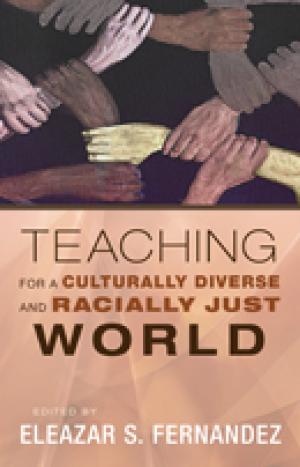
Eleazar S. Fernandez’s edited volume, Teaching for a Culturally Diverse and Racially Just World, brings together important voices in the study of religion and theology to explore issues surrounding racial-ethnic minority scholars. Fernandez writes that “‘marked’ identities” present challenges in all aspects of a scholarly career, from the classroom and research and publication to administration and institutional policy-making (2) and that even as racial-ethic minority scholars make great strides, the “racist system is cunning enough to do countermoves” (3). Willie James Jennings summarizes the crucial issue: “These teachers are measured against simulacrums, images of white male teachers, images of what women teachers ought to be, images of what minority teachers ought to be, and assumptions about which ideas and concepts should matter to women and minorities and which ideas and concepts are the proper domains of white men” (119), as David Maldonado, Jr. shows us the constraints and possibilities faced by racial-ethnic minorities across the institutional spectrum, including those in leadership positions. The purpose of this volume is not to complain, however, but to be constructive: it asks how institutions can re-form themselves, set “benchmarks” (4) to support racial-ethnic diversity, and, thereby, flourish.Two strategies characterize the volume. First, it deploys metaphors to help the reader to understand, even to experience, the positionality of the racial-ethnic scholar. For example, Jennings presents modern theological education as “the master’s house built exclusively for his sons” (109), while Loida I. Martell-Otero and Elizabeth Conde-Frazier use spatial metaphors to talk about “teacher space” and where our teaching takes place, respectively. With these metaphors, the volume asks what it means to work and to learn as “foreign bodies” in such places: what does it mean to be both at war and yet in love with our disciplines? The volume does not forget students; Peter Cha uses the metaphor of Martin Luther King, Jr.’s “Beloved Community” to think through the experience of racial-ethnic students in theological education. The volume asks us to think metaphorically in our assessment as well; it uses, for example, the vocational cycle as a way of thinking through justice work.A second strategy that characterizes the volume is the inclusion of the voices of allies. Paul O. Myhre and Nancy Ramsay offer valuable strategies and insights as two Euro-American colleagues who have accepted, as Ramsay puts it, “the pervasive influence of white supremacy and the recognition of the self-interested imperative for allies to leverage our privilege on behalf of institutional formation” (251). Using the metaphor of vision, Myhre asks us to expand our vision to see racism not as a singularity for racial-ethnic scholars but in its contexts, and to use the power of discernment to decide how to address the problem justly.This very important volume includes contributions from many stellar teachers. Though it focuses on theological education primarily, it is valuable for religious studies. Its range − from the location of the scholar, to students, to administration, to issues of assessment − is wide, but deftly handled. It is both theoretical and practical, making it a work one can mine for different kinds of insights. The volume asks for alliances that generate small but significant steps. As Fernandez puts it: “Small beginnings should not intimidate us. We must remember that we are not called to everything, but we are called to do something” (20).

Roger S. Nam It’s that time of year. Yes, it’s the season where professors often find themselves dealing with breaches of academic integrity. The explosion of online learning, alongside everyone’s massively expanded access to information, has further complicated this issue. Exhausted professors, I’ve got a special holiday gift for you:...
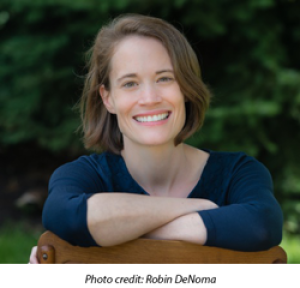
Elisabeth T. Vasko Ph.D. Assistant Professor of Theology Duquesne University In recent years, I have taught an upper-level Christology course in which we examine race, gender, and power. Sometimes my students register their dissatisfaction with reading Christology from the margins (James Cone, Kelly Brown Douglas, and Marcella Althaus-Reid) instead of the center (Anselm, Barth, von Balthasar, and Rahner). I can understand their frustration and discomfort. In the classroom, I make an effort to accept it and to take it seriously. I should also note that I teach at a university where the student population is mostly white. By and large,

Kate Blanchard Is anyone else out there taken by surprise, year after year, at how absurdly crazy the weeks feel between AAR and winter break? I’m not complaining – I just had a wonderful time with 10,000 religion nerds in sunny San Diego (which included a video shoot with my...

Robert C. Fennell, Th.D. Associate Professor of Historical and Systematic Theology Atlantic School of Theology The most uncomfortable thing I ever say among professional colleagues is that when I was a child I was taught that we are all racist. In 1970s Western Canada, where I grew up, racism was real but often obscured by polite indifference and feigned ignorance. Yet our public school system urged us to see that within most of us there is an element that fears and reacts to difference. The terms for this dynamic were probably different then, but that was the heart of the...
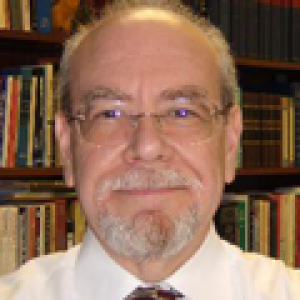
When a school discovers a declining trend in enrollment it's time to huddle for some frantic strategic planning. If anxiety about the enrollment numbers is high enough some will want to talk about how the times they are a changin'...
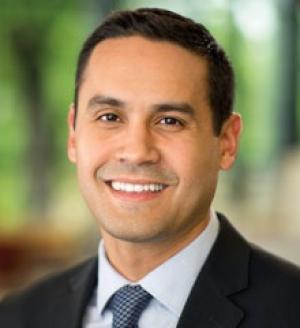
Eric D. Barreto Ferguson is revelatory. “I wanted to comment on the tragic rift that we’re witnessing,” Bob Staake says about his cover for the December 8th issue of The New Yorker, arriving next week. “I lived in St. Louis for seventeen years before moving to Massachusetts, so watching the...
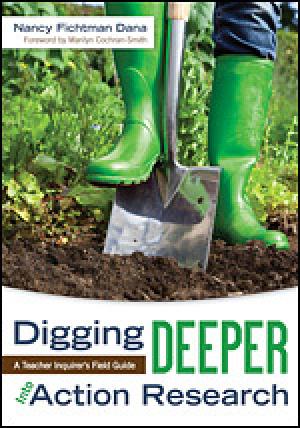
Although targeted mainly to K-12 teachers, this short and easy to read book is helpful and could serve as a companion to professors of religious studies and theology who want to better their understanding of action research for improving classroom instruction. The ideas and principles presented in the book are not difficult to translate into higher education classroom contexts. The book consists of six chapters and begins with defining teacher research and framing the research question. Dana provides five “wondering” questions for teachers to consider: (1) Is your wondering something you are passionate about? (2) Is your wondering focused on student learning? (3) Is your wondering a real question? (4) Is your wondering focused on your practice? and (5) Is your wondering phrased as a dichotomous (yes/no) question? The author then illustrates how to reframe these initial wonderings into pointed inquiry. She believes that good ideas and thought-provoking questions can only flourish through methodical inquiry. The book ends with two chapters that are concerned with ways to present inquiry-based research to colleagues and help them to improve their own teaching and research practices. In the chapters that fall between them, Dana discusses ways to fine-tune the research plan in chapter 3 and how to analyze data in chapter 4. Chapter 3 focuses on fine-tuning the research plan, and asks a number of pointed and useful questions that would be relevant for university, college, and seminary professors: (1) Does your data collection strategies align with your wondering and all other aspects of your inquiry plan? (2) Are you using multiple forms of data to gain insight into your wondering? (3) Does one of the forms of data you will collect include literature and/or have you already used literature to frame your wondering? (4) Is the design of your study experimental? In chapter 4, Dana distinguishes between formative and summative data analysis by giving real life vignettes from the field and also provides practical ways to avoid data analysis paralysis by way of self-guided worksheets. This might be helpful for those seeking to link teaching goals with outcomes and assessment strategies. Throughout the book, Dana inspires, reminds, and finally guides the reader through an action research process. As a result of going through this research process, readers are escorted through the process of improving their own pedagogical practices, “studying your practice empowers you to: engage learners, enable other professionals to learn from you, expand the knowledge base for teaching, express your individual identity as a teacher, and embrace all the rich complexity inherent in the act of teaching and learning” (80). This book might initially overwhelm professors of religious studies and theology if they have not read in practitioner action research or have not used action research to improve their own pedagogical practices. However, for those with some experience using action research as a strategy for teaching, this book is a welcome resource to help improve teaching and learning practices in the classroom.
Wabash Center Staff Contact
Sarah Farmer, Ph.D
Associate Director
Wabash Center
farmers@wabash.edu